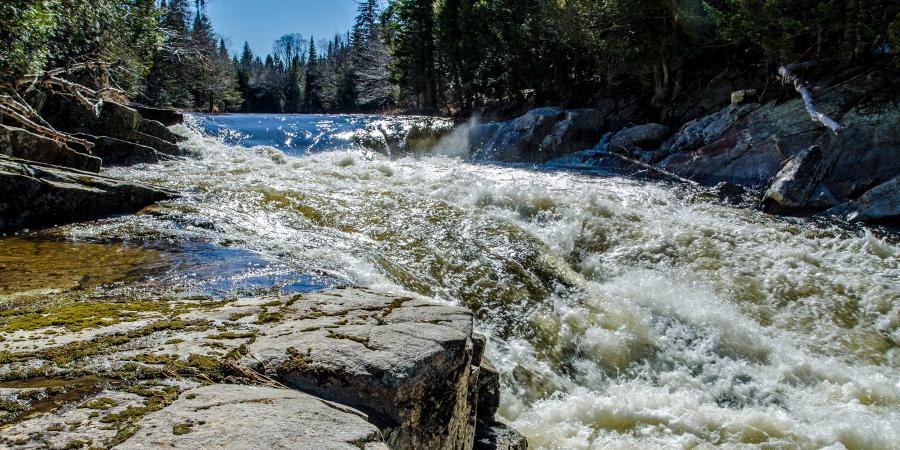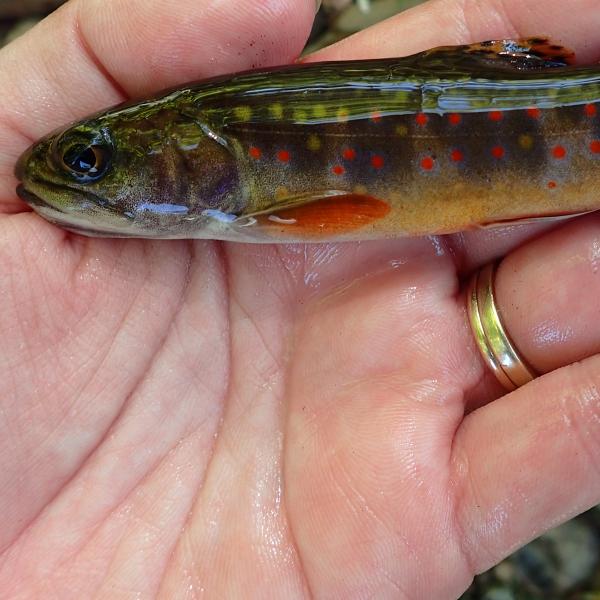When warm spring temperatures cause snowmelt to flow down mountainsides, and April showers bring inches of new rain, small streams and larger rivers begin to rise. Flows increase and overtop banks carrying an annual pulse of leaf litter and woody debris. Built-up sand and silt that doesn't spread on to floodplains, gets washed downstream, and cobble is sorted – rebuilding the streambed. Riparian vegetation bends and roots hold tight, buried deep in shoreline soils, sands, and gravel. But where do the fish go? They mostly hunker down in rock crevices and slack water or they get washed downstream, but they also have an opportunity to benefit from the bounty of floodwaters.
Picture an average rainy spring day. The streams will rise a few inches after the rain ends, and a pulse of material will come downstream. Put on your virtual snorkel and come with us under the surface. Coming toward you downstream are sticks, branches, dead leaves, and mud. But with it come loads of mayfly and dragonfly larvae and other insects that were dislodged from their hiding places. From the land, beetles, spiders, and worms get swept into the water from flooded bank areas. This creates a veritable feast for fish, with free home delivery! A large pulse of food will leave fish foraging and eating voraciously for days, and disappoint all but the most persistent fishermen above the surface. If the high waters persist, nutrients and organic matter will be released and lead to a burst of plankton growth and macroinvertebrate activity in the area.
Now picture a large flood event, where the streams and the river rise to bankfull or beyond. Our virtual snorkels will show us a totally different story. Find a rock to grab on to, and you'll see the fish actively seeking out areas to shelter from high flows – such as deep pools, undercut banks, and areas of slow water behind large boulders. The currents are slower at the bottom of the river channel and these velocity refuge areas are a good place to escape the torrent. While some fish can ride out the storm in their usual home resting and feeding grounds, others are using up a great deal of energy to fight the currents and access slower waters – potentially harming their metabolism and their chances for long-term survival.
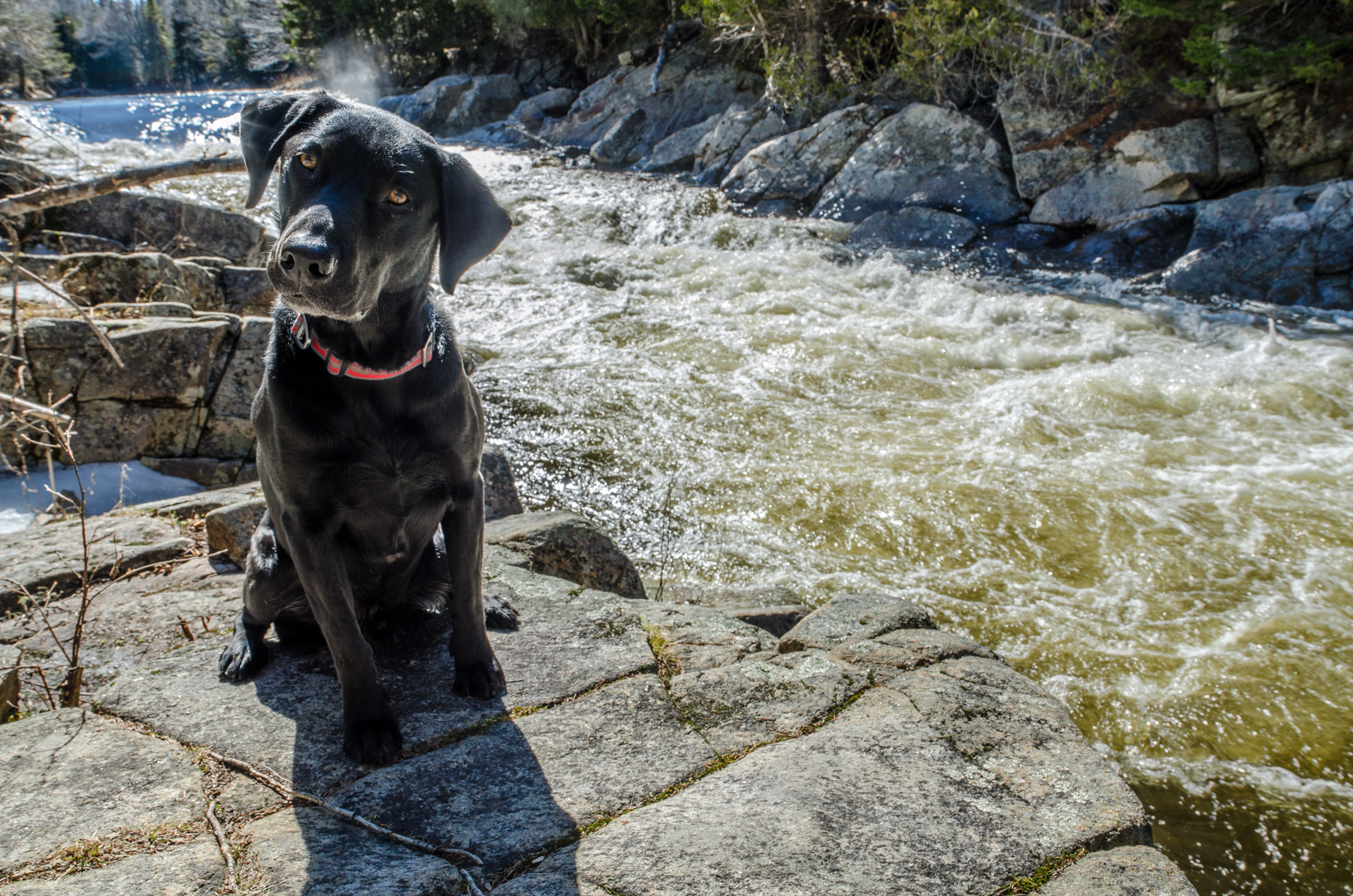
Are you tired of swimming yet? Even our old friend Khyber was more adapted for swimming than humans are.
Are you getting tired of swimming yet? Unlike us humans, fish have adapted to high flow events over many millennia. Thanks to their streamlined body shape, they can hold and work through strong currents. Did you remember to cover yourself in Vaseline? Trout and many other riverine fish have a mucous layer coating their body that reduces friction with the water and allows them to swim with ease. If the current out here in the main river is just too much, we can try to follow some of the fish into a tributary stream. Be careful as you go or you may be swept downstream. Many fish can return to the same home territory after floodwaters recede, however. If natural or manmade stream barriers should prevent the fish from returning upstream, they will need to seek a new suitable habitat for feeding, resting, and spawning.
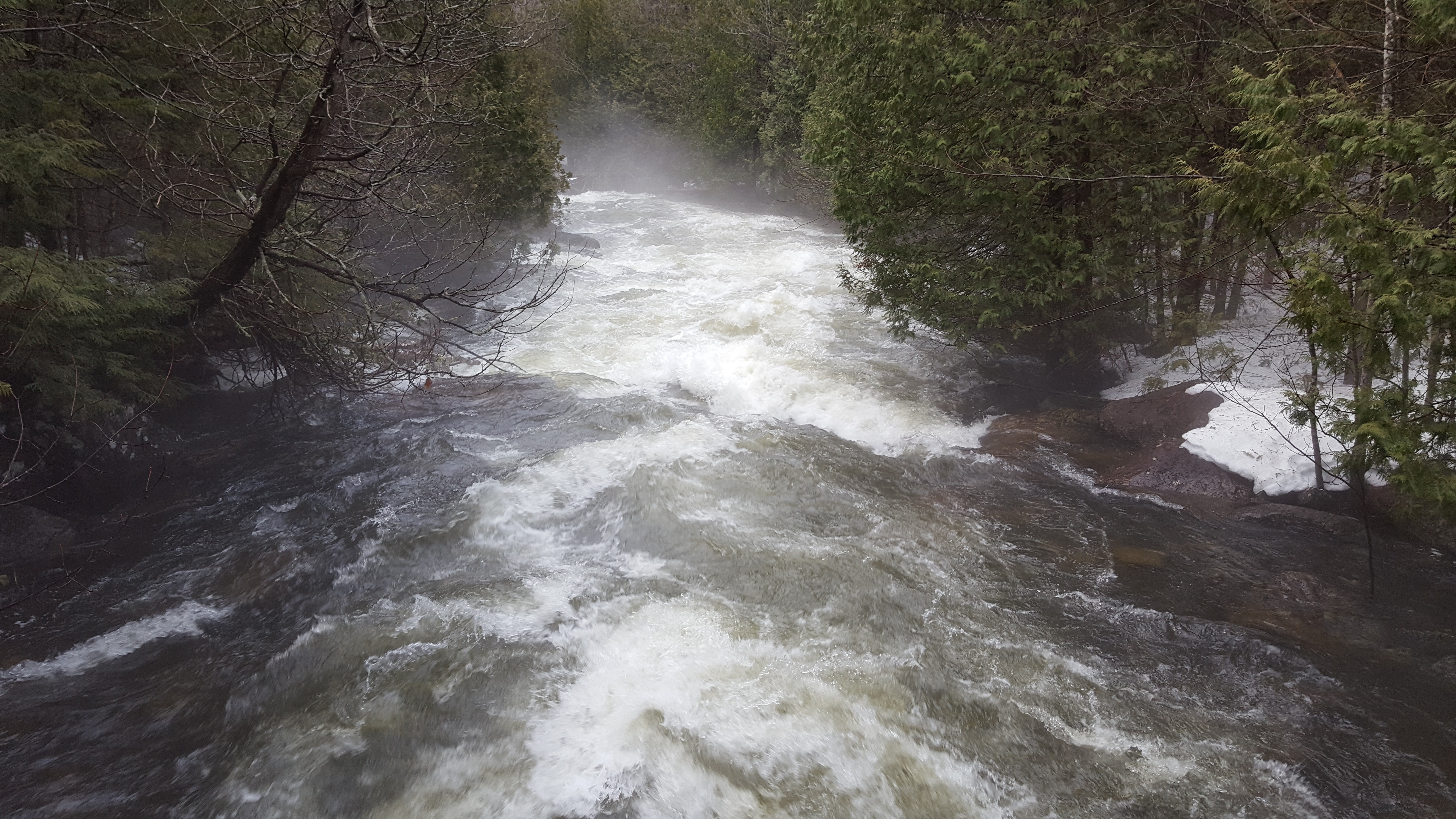
As floodwaters recede, many fish that were displaced can return to their favorite resting spots.
It is believed that 100-year flood events lead to high fish mortality. Flood timing and duration determine whether young life stages survive. Brown trout and brook trout are fall spawners, and their eggs and embryos are most at risk during mid-winter and early spring high flow events. The 2019 Halloween storm, for example, could have caused high mortality in streams where these fish already spawned. Fry and juveniles tend to inhabit slower moving waters, so they might be protected from high flow events. Swimming ability increases quickly with age and juvenile fish (1-2 years) can often escape and find slower waters to shelter in. One might think the game is over, but these events may be beneficial to fish even after the pulse of fresh food items fades away.
The major longer-term benefits of floods for fish include new habitats and improved food sources. Pools and deeper channels are carved, and large woody material gets incorporated into the streambed to become shelter-offering habitat structures. Sand and silt are cleared away, creating better spawning habitat. For young life stages, moderate flows might improve egg survival by moving sand out of spawning redds and keeping them from suffocating. Summer flooding events may increase habitat for juvenile and adult fish and allow all fish to eat more and grow more. Aquatic insects, while initially displaced, are good at responding to disturbances and recolonize newly created or newly emptied habitats quickly, providing new sources of food.
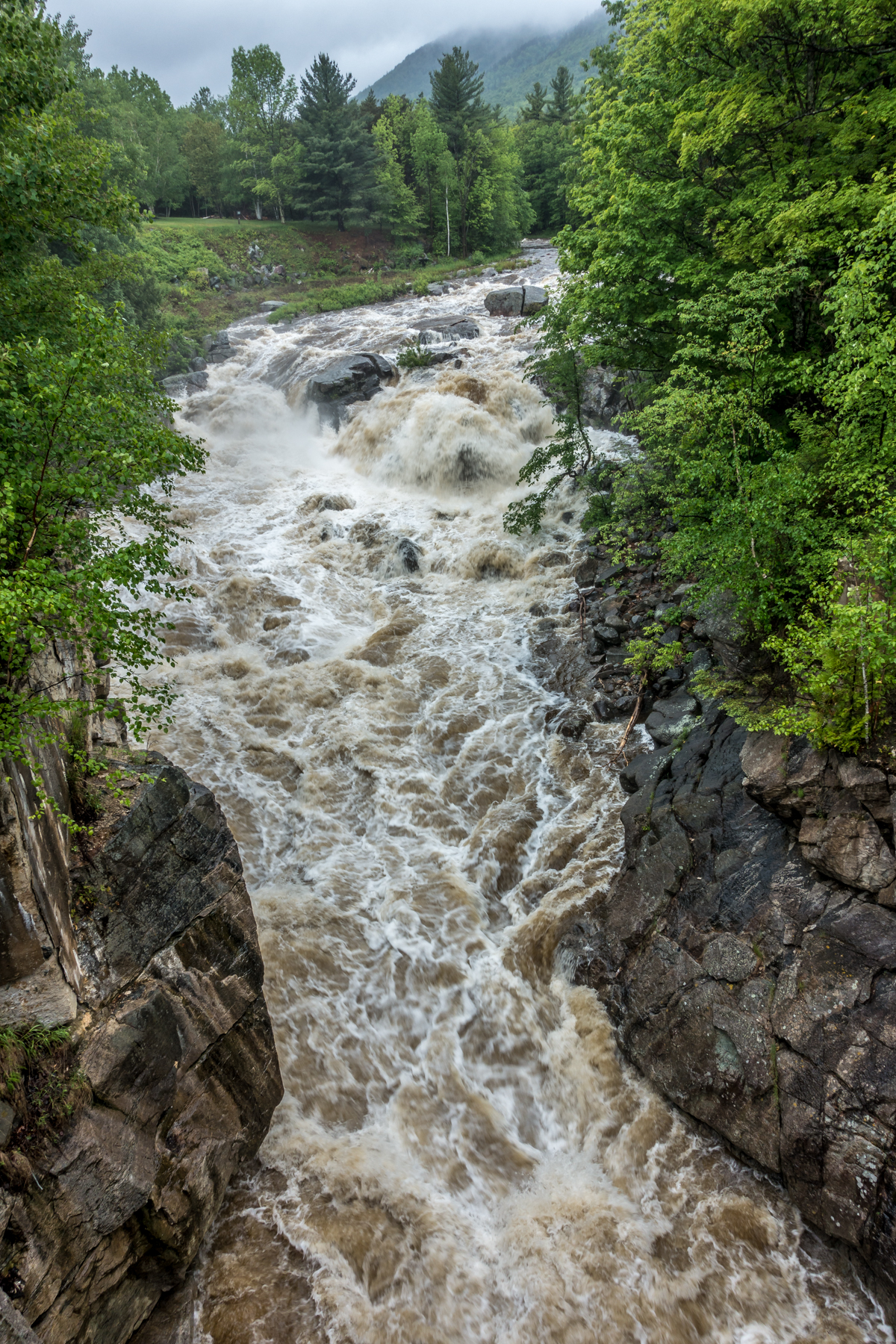
Flooding can benefit fish by creating new habitats and bringing pulses of new food sources downstream.
Climate change is leading to more precipitation overall in the northeast. Recent predictions suggest that we will see an increase in the frequency of heavy precipitation and flood events in the coming years. Knowing that fish are resilient, resourceful, and well adapted to high flows is reassuring. The best thing we can do to manage fish populations and their ability to adapt to flooding and ice patterns is to ensure habitat heterogeneity or diversity of habitat types exist in all parts of the river. Only then can we know that fish will have ample opportunities to move and escape from adverse conditions and high flow events.
Sign-up for our e-newsletter to get weekly updates on the latest stories from the Ausable River Association.
